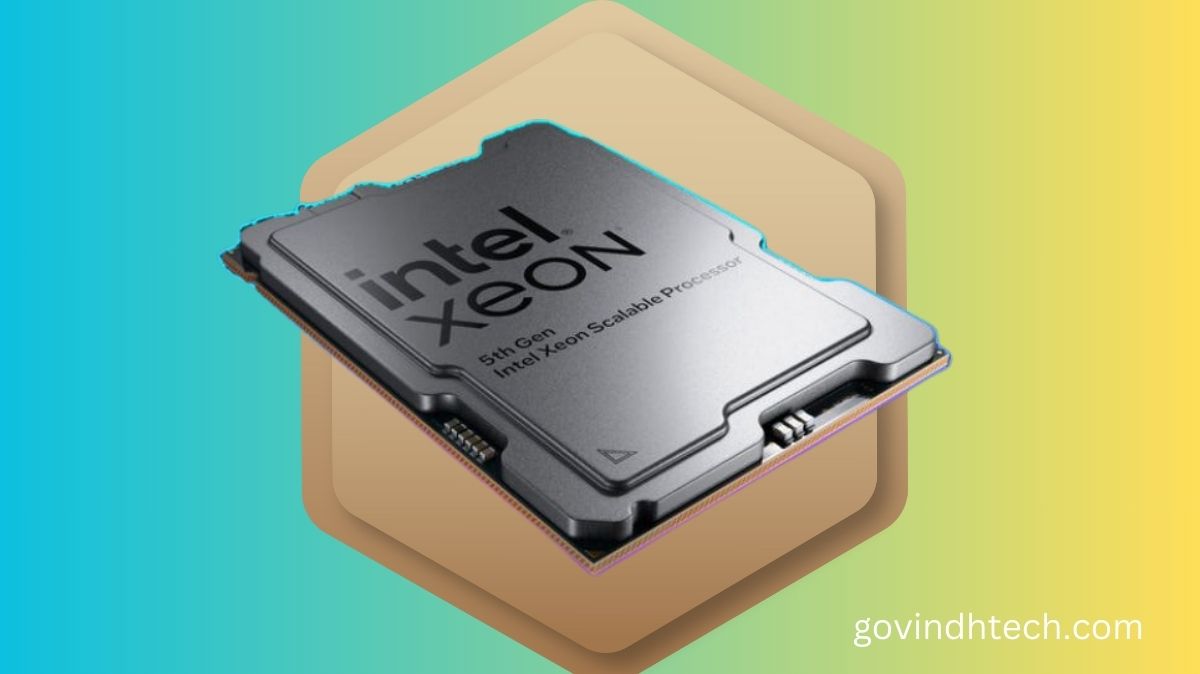Up to 64 cores and 320MB of L3 cache are offered by Intel’s 5th Gen Xeon’s “Emerald Rapids” CPUs
Which are said to perform up to 1.4 times better than Sapphire Rapids.Emerald Rapids is getting ready to face AMD’s EPYC Turin, thanks to Intel
On December 14, Intel’s 5th Gen Xeon’s CPUs. But what Emerald Rapids offers to the server industry has been revealed during an Intel presentation titled “Data Centric Processor Roadmap” (via InstLatX64) held at the European Southern Observatory.
Emerald Rapids, which pushes more cores and L3 cache, is based on the same Intel 7 node as Sapphire Rapids, but it offers greater performance per watt. As a point of reference, Intel says that the Xeon Platinum 8592+ (Emerald Rapids) and the Xeon Platinum 8480+ (Sapphire Rapids) perform up to 1.2X better on the web (server-side Java), 1.3X better in HPC (LAMMPS- Copper), and 1.2X better in media (transcode FFMPEG).
Given that Emerald Rapids employs faster Raptor Cove cores than Sapphire Rapids, which uses Golden Cove cores, the chipmaker’s performance claims appear reasonable. Additionally, the Xeon Platinum 8480+ has eight cores less than the anticipated Xeon Platinum 8592+.
Intel made sure to emphasize Emerald Rapids’ notable improvements in AI performance, which are attributable to the company’s integrated AI accelerators and Intel Advanced Matrix Extensions (Intel AMX), especially in light of the current AI boom. The projected uplifts from Intel range from 1.3X to 2.4X, dependent on the workload.
Additionally, Emerald Rapids will include an improved Ultra Path Interconnect (UPI) and greater native DDR5 capability. Although Intel did not provide specifics,They anticipate that Emerald Rapids will use DDR5-5600 instead of DDR5-4800, like Sapphire Rapids did. On Emerald Rapids, Intel most likely increased the UPI speed from 16 GT/s to 20 GT/s.
A PowerPoint deck shows that, although Intel has verified that Emerald Rapids would maintain 80 PCIe 5.0 lanes for expansion, it also seems to have introduced Compute Express Link (CXL) bifurcation.
However, what’s really more intriguing is that Intel’s 5th Gen Xeon’s offered a die shot of Emeralds Rapid. The four-die design on Sapphire Rapids is shown as a two-die design in the floorplan. However, Emerald Rapid is said to have a lower total area than Sapphire Rapids, which might be the consequence of Intel rearranging the architecture to maximize available space. Reducing size aids in lowering latency. A modular die fabric connects the two large dies.
Although Intel’s 5th Gen Xeon’s has not disclosed the number of cores on each Emerald Rapids die, current conjecture is that each die has 33 cores, with one core being deactivated. As a result, rather of maxing out at 66 cores, the highest Emerald Rapids chip which seems to be the Xeon Platinum 8592+ maxes out at 64.
The most alluring feature of Emerald Rapids is the rise in L3 cache. Intel upgraded the L3 cache on Sapphire Rapids from 1.875MB per core to 5MB per core on Emerald Rapids, a 2.6X improvement. The highest 64-core processor will thus feature an incredible 320MB of L3 cache.
According to Emerald Rapids’ design, each die has two memory controllers, for a total of four. Two memory channels should be managed by each controller, allowing Emerald Rapids to maintain memory support for eight channels, much as Sapphire Rapids. In the meanwhile, two UPI, two accelerator engines per die, and three PCIe controllers are shown in the diagram.
A list of the suspected Emerald Rapids CPUs that Intel plans to release on the server market has been revealed by hardware detective momo us. Based on the comparison Intel provided, the Xeon Platinum 8593Q looks to have the same 64-core/128-thread configuration as the Xeon Platinum 8592+. But the base clock of the former is 100 MHz higher, and the “Q” suffix indicates that it’s a lower Tcase SKU designed for liquid cooling. A version of the Intel’s 5th Gen Xeon’s Platinum 8592+ that is more suited for SaaS cloud systems is the Xeon Platinum 8592V.
Intel is ready to compete in every price range with a comprehensive stack of Emerald Rapids. The Xeon Gold has between 12 and 36 cores, whereas the Xeon Platinum variants have between 12 and 64 cores. Finally, beginning at six cores, the entry-level Xeon Silver SKUs feature modest core counts.
Emerald Rapids may be easily upgraded to the LGA4677 socket version of Intel’s Eagle Stream platform, reducing server downtime and increasing total cost of ownership (TCO). Additionally, the clients of Intel will be able to update their server products with the new 10nm processors in order to remain competitive with AMD’s EPYC, particularly the upcoming Intel’s 5th Gen Xeon’s EPYC Turin, which is expected to be released before the end of the year.



[…] mixed-architecture simulations can be conducted since the Intel Simics Simulator Public Release includes the Intel Architecture-based Quick-Start Platform (QSP). […]
[…] Intel has disclosed further details on its forthcoming Intel Sierra Forest Xeon central processing units (CPUs), which will be outfitted with the Sierra Glen E-Core that has been tuned. In the future, client central processing units (CPUs) that are based on Meteor Lake and Arrow Lake will include this core, which is an enhanced version of the Crestmont core. […]
[…] launched 5th Gen Intel Xeon and Intel Core Ultra CPUs for data center, cloud, and edge next gen AI at its AI Everywhere event […]